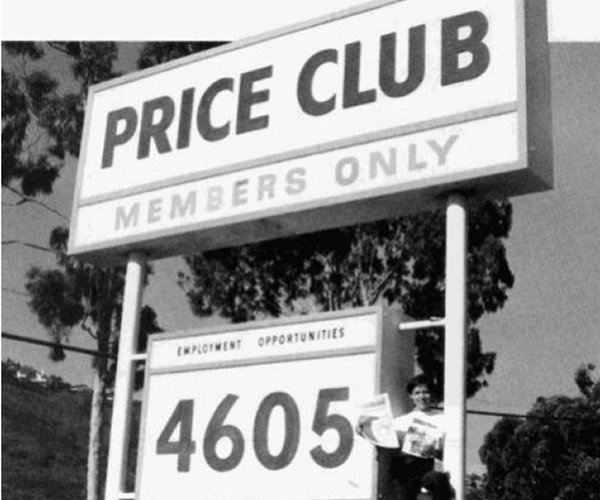I’m excited to introduce my list of US Compounders for the first time ever.
I’ve been invested in a number of these remarkable companies for some time now. They join the family of Canadian high return on capital companies – “Capital Compounders” – that I originally wrote about in 2017.
Among these 50 U.S. Compounders is Costco.
Charlie Munger, Warren Buffett’s long-time business partner, loves the company. In a recent interview, Munger said:
“Basically the Mungers have three stocks [/investments] – Berkshire Hathaway, Costco and Li Lu’s partnership….You don’t need to own a lot of different things to get rich.”
Costco is what Munger and Buffett call a “Compounding Machine”:
“The ideal business is one that earns very high returns on capital and that keeps using lots of capital at those high returns. That becomes a compounding machine.” — Warren Buffett
Indeed, Costco’s Return on Capital is high: 16% (5-yr avg.) and 17% TTM, and it’s maintained that for even longer (~15% avg. ROIC over 10+ years).
The magic of compounding capital at high rates of return has created ample wealth for Costco’s shareholders. Within a recent time-frame, its stock price has gone from $40/share (2001) to $303.76/share today. Costco’s almost an 8x bagger within the past 20 years alone, which is pretty darn good for a company founded in 1976 (under the “Price Club” name). And it’s still got growth ahead…
Let’s examine Costco’s underlying business performance (per share metrics); 2001 – 2018:
| Metric (per share) | 2001 | 2018 | Growth |
| Revenue | $77.03 | $320.44 | 4x |
| Earnings | $1.29 | $7.09 | 5.5x |
| Cash Flow | $2.00 | $13.07 | 6.5x |
| Book Value | $10.81 | $28.97 | 3x |
Source: Value Line, and Morningstar
This is why I personally love Compounders too. High return on capital drives share price performance over the long run…
“It’s obvious that if a company generates high returns on capital and reinvests at high returns, it will do well” — Charlie Munger
Though, the challenge in selecting Compounders today is applying ones best guess as to whether the business will continue to compound at those high rates into the future. Competition can be fierce, the pace of innovation / change destructive, and the business may be reaching its own maturation point. Certainly, past performance does not equate to future return. Which is why among my focus areas for selecting the 50 U.S. Compounders was each company’s future (re-) investment opportunities, and ability to continually compound intrinsic value.
It’s honestly more an art than it is a science. Thus, I won’t get it all right. The list of Compounders will evolve.
Let’s use Costco again as an example. Its future business is seemingly bright. Costco opened its first-ever store in Shanghai (China) on August 27th this year. 139,000 people signed up for memberships at the new store on day one, and the crowds got so big that Costco was forced to cut the opening day short.
That’s an exciting new development for a household-name retailer.
Interestingly, most of the 50 U.S. Compounders that I’ve selected are boring, simple businesses. They’ll probably continue to grow (until they don’t) despite future recessions, and technological change. You won’t win any points discussing them at cocktail parties. But boring can be beautiful.
On average, these US Compounders have achieved:
– 22% ROIC (5-yr avg., and TTM);
– 260% Avg. Cumulative Return (5-yrs), and;
– 27% avg. Compound Return (over 5 years)
The spreadsheet of 50 U.S. Compounders contains information to help you pick n’ choose stocks for your portfolio: company names, ticker symbols, business type, company overview, CEO / Founder, 5 years of ROIC, current P/E, PE/ROIC, and cumulative plus compound returns (over the past 5 years). It also includes my full list of criteria for selecting these Compounders over all of the other thousands of US stocks.

